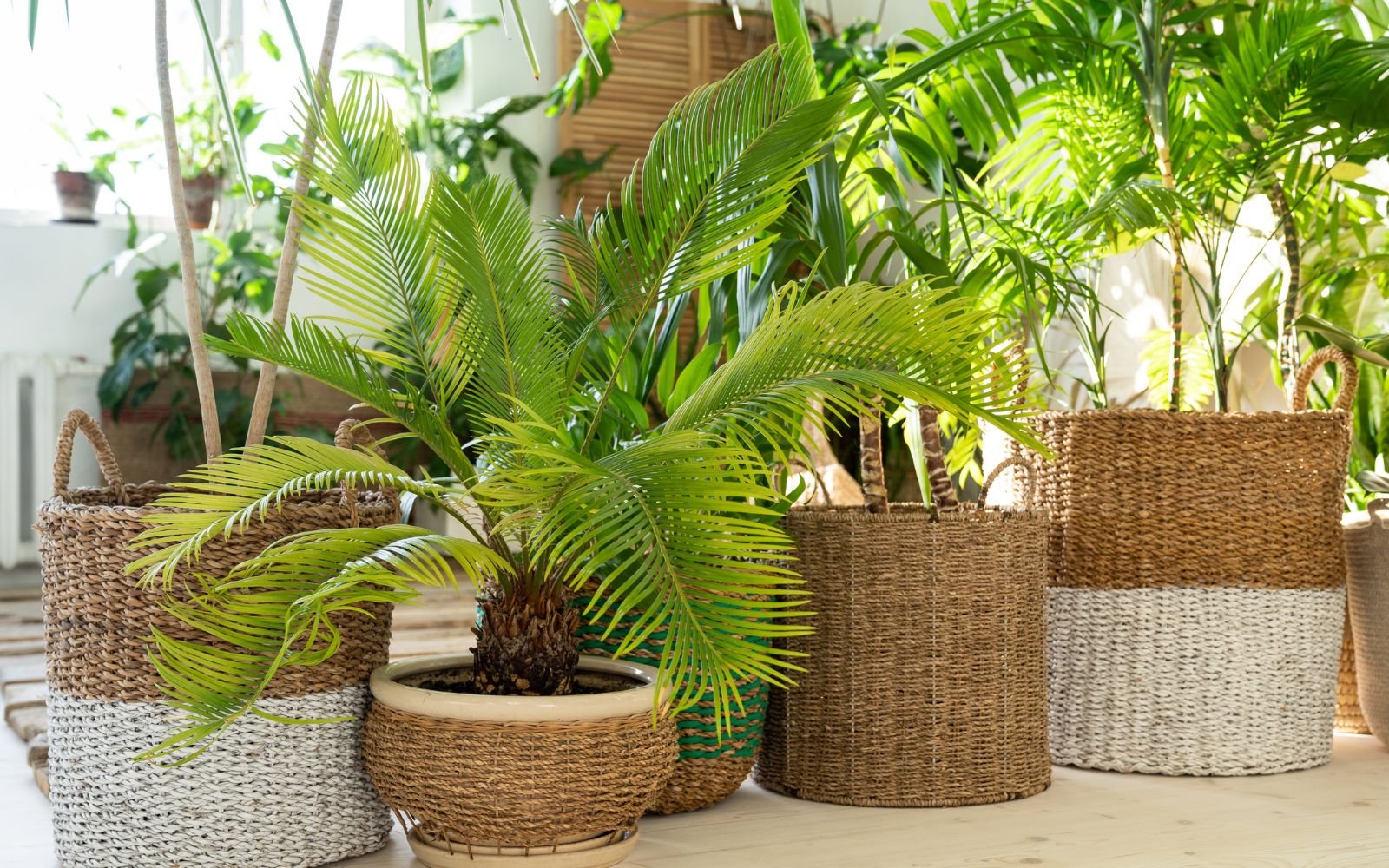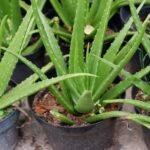The Majesty Palm (Ravenea rivularis) is a stunning tropical plant that brings elegance and lush greenery to any space. Whether you are growing it indoors as a houseplant or outdoors in a warm climate, this palm requires the right balance of light, water, and humidity to flourish.
In this guide, we will cover everything you need to know about caring for a Majesty Palm, from the ideal lighting conditions and watering schedule to common pest problems and troubleshooting tips. Plus, you’ll discover the many benefits of this beautiful plant, making it a must-have for plant lovers.
Let’s dive into the essential care tips to keep your Majesty Palm healthy and thriving for years to come!
Table of Contents
ToggleCare Tips For A Healthy Majesty Palm
To thrive, Majesty Palms require a delicate balance of light, water, and humidity. Here’s how to care for this elegant plant:
Light: In its natural environment, the Majesty Palm grows as an understory plant, meaning it’s accustomed to filtered light. Indoors, provide it with bright, indirect light, and it will appreciate a few hours of sunlight through a window. If you notice your palm stretching, it may be seeking more light, so you can move it to a brighter spot. However, avoid direct sunlight, as it can scorch the leaves.
Soil: For optimal growth, use a standard potting mix with added peat for extra moisture retention. Majesty Palms are sensitive to waterlogged roots, so it’s important to ensure the soil has good drainage. These palms also prefer acidic soil, ideally with a pH level of 5.
Watering: Keep the soil evenly moist but never waterlogged. It’s essential to avoid letting the plant dry out completely between waterings, as this can lead to the lower fronds turning yellow and dropping. On the other hand, overwatering can cause root rot, so it’s crucial to strike a balance.
Temperature & Humidity: Majesty Palms flourish in temperatures between 65°F and 85°F (18°C – 29°C). They thrive in high humidity, though they can tolerate normal household humidity levels. In drier environments, consider using a humidifier to boost moisture. If the air is too dry, your palm may become vulnerable to insect pests.
Fertilization: During the growing season, feed your Majesty Palm with a weak, liquid fertilizer once or twice. Avoid fertilizing during the winter months when the plant is in dormancy. If you notice the plant stretching excessively, reduce or stop fertilizing to prevent further elongation.
Types of Majesty Palm
While there are around 20 species in the Ravenea genus, most are rare or endangered. The Ravenea rivularis is the only one commonly grown as a houseplant or garden tree, and it doesn’t have named cultivars.
Pruning: Regular pruning isn’t necessary for Majesty Palms, but for aesthetic purposes, you may want to remove any brown or yellow fronds. Always use clean, sharp pruning shears to avoid damaging the plant.
Propagating Majesty Palm
The best way to propagate a Majesty Palm is through division. This is done by separating the offshoot “pups” from the main plant. To do this:
- Gently remove the plant from its pot by rolling it to the side.
- Look for small pups or offshoots that can be separated from the main root ball.
- Gently massage the root ball to loosen the pups. If necessary, use a sharp knife.
- Replant the pups in pots with fast-draining soil.
- Place them in a well-lit area and wait about a month before fertilizing.
Potting & Repotting: Repot your Majesty Palm every 1-2 years. When repotting, be gentle with the root ball to avoid damage. It’s best to use a large, heavy pot made of clay or ceramic to prevent the plant from tipping over as it grows taller.
Troubleshooting Common Problems:
- Yellowing Leaves: This is usually a sign of improper watering. Either overwatering or underwatering is likely to blame. Yellowing can also occur if the plant lacks sufficient light, humidity, or nutrients.
- Brown Leaves: Crispy, brown leaves typically indicate that the plant is getting too much direct sunlight. Move the plant to a spot with indirect light to avoid leaf burn.
- Brown Tips: If the leaf tips turn brown, it’s often a sign of insufficient watering. Make sure the plant is watered regularly but not overwatered.
With the right care and attention, the Majesty Palm can be a beautiful, lush addition to your indoor or outdoor space, adding a touch of tropical elegance to any environment. Whether you’re looking for a statement plant for your home or a majestic landscape tree, this palm is sure to impress!
Common Pests Problem
Majesty palms can be susceptible to several pests, especially when grown indoors or in environments with low humidity. Some of the most common pests that affect these palms include:
- Aphids: These tiny, soft-bodied insects suck sap from the leaves and stems of the plant, causing them to become distorted, yellowed, or curled. Aphids can also spread diseases between plants. You may notice a sticky residue (honeydew) left on the leaves as a result of their feeding.
- Scale Insects: Scale are small, oval-shaped pests that attach themselves to the leaves and stems of the plant. They appear as brown or white bumps and can be difficult to spot at first. Like aphids, scale insects feed on the plant’s sap, weakening the plant and causing yellowing leaves or stunted growth.
- Whiteflies: These are small, flying pests that feed on the underside of leaves. They cause damage by sucking out the plant’s sap, leading to yellowing, wilting, or deformed leaves. Whiteflies also excrete honeydew, which can attract mold growth.
- Spider Mites: Spider mites are very small, arachnid pests that thrive in dry, low-humidity conditions. They feed on the underside of the leaves, causing stippling (tiny yellow or white spots). Over time, this feeding can lead to leaf discoloration, dryness, and eventually leaf drop.
- Mealybugs: These pests are soft-bodied and appear as white, cotton-like clumps. They often congregate in the leaf joints or on the stems. Mealybugs suck sap from the plant, causing yellowing, stunted growth, and a general decline in plant health. They can also excrete honeydew, which encourages mold and fungal growth.
Signs of a Pest Infestation:
- Yellowing or discolored leaves
- Sticky residue or honeydew on the leaves or surrounding surfaces
- Webbing on the plant (especially in the case of spider mites)
- Wilting or deformed leaves
- Visible pests, such as small bumps (scale) or white, cotton-like substances (mealybugs)
Treating Pest Problems:
- Insecticidal Soap or Neem Oil: A mild, non-toxic insecticidal soap or neem oil solution can help treat most pests. Spray it on the affected areas of the plant, making sure to cover both the top and underside of the leaves.
- Regular Cleaning: Regularly wiping the leaves with a damp cloth or spraying them with water can help reduce the presence of pests, especially dust mites or small-scale insects.
- Isolate the Plant: If you notice pests, it’s a good idea to isolate the infested plant to prevent the pests from spreading to other plants.
- Pruning: If the infestation is localized to a small area, you can prune the affected parts of the plant and discard them to prevent the pests from spreading.
- Increase Humidity: For spider mites and mealybugs, increasing the humidity around the plant can discourage them from infesting the palm. A humidifier can be very helpful in this regard.
By keeping an eye on your Majesty Palm and taking action at the first signs of pests, you can prevent major damage and keep the plant healthy and thriving.
Majesty Palm Benefits
The Majesty Palm (Ravenea rivularis) offers several benefits, both as an indoor plant and when used outdoors in tropical environments. Here are some of the key benefits of having a Majesty Palm in your space:
1. Air Purification
Like many indoor plants, the Majesty Palm is effective at purifying the air. It can help improve indoor air quality by absorbing toxins and releasing oxygen. Plants such as the Majesty Palm can remove common indoor pollutants like formaldehyde, benzene, and trichloroethylene, making it a great addition to your home or office for cleaner, fresher air.
2. Improved Humidity
Majesty Palms thrive in high humidity, and their presence can help increase the moisture levels in the air, especially in dry indoor environments. This can be beneficial for your skin, respiratory system, and overall comfort, particularly in areas with low humidity or during the winter months when indoor air tends to dry out.
3. Aesthetic Appeal
The Majesty Palm’s elegant, feathery fronds and tall stature bring a touch of tropical beauty to any space. It serves as a statement piece in both homes and offices, adding a natural, lush, and calming atmosphere. Whether placed in a corner or as a centerpiece, its graceful appearance can enhance the visual appeal of a room.
4. Stress Reduction and Mood Boost
Having plants like the Majesty Palm indoors has been shown to have a positive effect on mental well being. Studies suggest that indoor plants can help reduce stress, lower blood pressure, and boost overall mood. The calming, green presence of the palm can create a peaceful, serene environment, helping you relax and feel more connected to nature.
5. Natural Temperature Regulator
Indoor plants like the Majesty Palm can have a small but significant impact on regulating temperature in a room. Through a process called transpiration, plants release moisture into the air, which can help cool down the environment slightly, making your space more comfortable.
6. Low Maintenance
Compared to many other houseplants, the Majesty Palm is relatively easy to care for, making it a good choice for those who want the benefits of a tropical plant without too much fuss. While it does require specific conditions like bright, indirect light and regular watering, it’s generally a forgiving plant as long as you follow the basic care guidelines.
7. Enhanced Indoor Aesthetic for Large Spaces
Given its height and lush appearance, the Majesty Palm can fill larger spaces, adding vertical greenery and balance. Its striking, long fronds make it a perfect choice for creating a tropical vibe or adding greenery to open-concept areas where other plants may feel too small or overwhelmed by the size of the room.
8. Natural Privacy Screen
In larger spaces, the Majesty Palm’s tall stature can act as a natural divider, helping to create separate areas within a room. This is particularly useful in open-plan living areas or offices where you may want to establish some privacy or designate different zones without the need for physical walls.
9. Ecological Impact
By choosing a plant like the Majesty Palm, you are contributing to the overall health of the environment. Plants are natural carbon sinks, meaning they absorb carbon dioxide and release oxygen. Having more plants indoors can help reduce the overall carbon footprint and contribute to a healthier planet.
Majesty Palm Lifespan
The Majesty Palm (Ravenea rivularis) is a slow-growing plant that can live for several decades when provided with the right care.
- Lifespan Indoors vs. Outdoors
Indoors: With proper care, a Majesty Palm can live 10-15 years or more in a home environment. However, it may grow more slowly and remain smaller due to limited root space and environmental factors.
Outdoors: In its natural habitat or tropical landscapes, it can live up to 50-100 years, growing into a towering tree nearly 100 feet tall.
- Factors That Affect Lifespan
To maximize the lifespan of your Majesty Palm, focus on:
Proper Lighting – Bright, indirect light with occasional filtered sun.
Consistent Watering – Keep soil moist but avoid overwatering.
High Humidity – Prefers 50%+ humidity; use a humidifier if needed.
Nutrient Supply – Feed with diluted fertilizer in spring and summer.
Pest Prevention – Keep an eye out for spider mites, mealybugs, and scale.
With the right conditions, a Majesty Palm can be a long-lasting, lush addition to your home or garden!
Faqs
1. How can I fertilize my Majesty Palm?
Feed your Majesty Palm with a weak, balanced liquid fertilizer once or twice during the growing season (spring and summer). Avoid fertilizing in the winter months when growth slows down.
2. Can I prune my Majesty Palm?
Pruning isn’t necessary for health, but you can trim off brown or yellow fronds for aesthetic purposes. Always use clean, sharp pruning shears.
3. Can I grow a Majesty Palm in low light?
Majesty Palms prefer bright, indirect light. While they can survive in lower light, their growth will slow, and they may become leggy. If you must keep them in low light, supplement with a grow light.
4. Are Majesty Palms toxic to pets?
No! Majesty Palms are non-toxic to cats and dogs, making them a great choice for pet-friendly homes.
5. Do Majesty Palms flower?
Yes, but only when grown outdoors in ideal conditions. Indoor Majesty Palms rarely flower.







